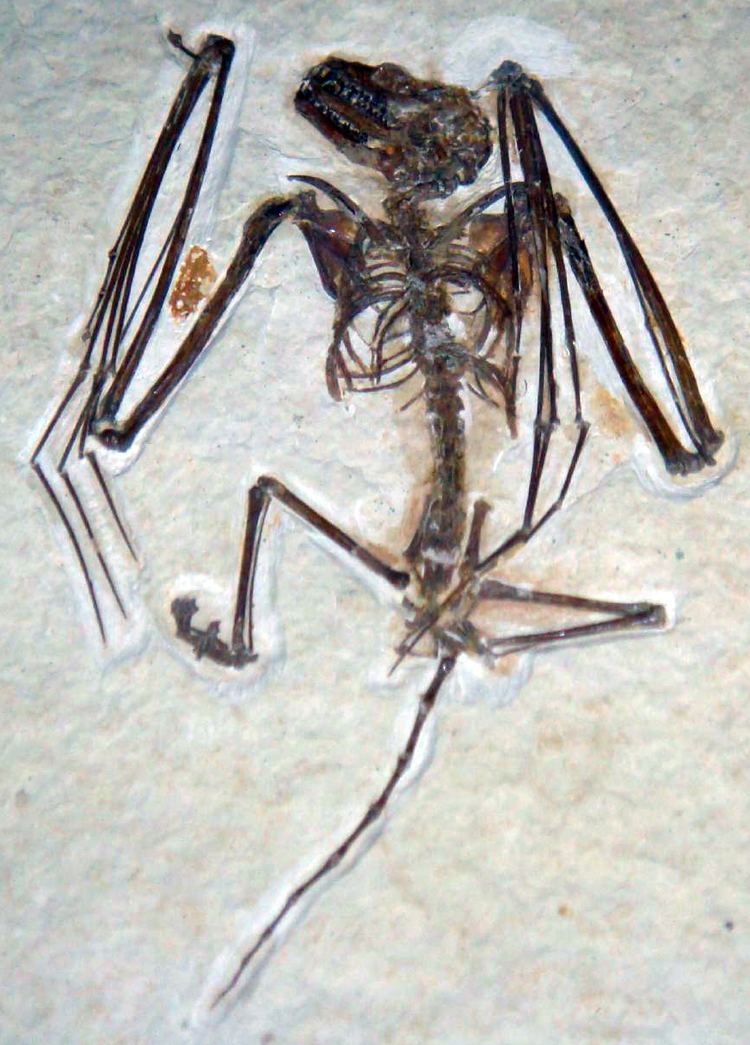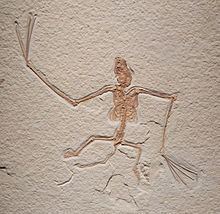Suborder Microchiroptera Phylum Chordata Order Bat | Family †Icaronycteridae Rank Genus | |
 | ||
Similar | ||
icaronycteris index
Icaronycteris is an extinct genus of microchiropteran (echolocating) bat that lived in the early Eocene, approximately 52.2 million years ago, making it the earliest known definitive bat. Four exceptionally preserved specimens, among the best preserved bat fossils, are known from the Green River Formation of North America. There is only one thoroughly described species of bat in the genus, I. index, although fragmentary material from France has also been tentatively placed within Icaronycteris as the second species I. menui. I. sigei is based on well-preserved fragments of dentaries and lower teeth found in Western India.
Contents

Description

Icaronycteris measured about 14 centimetres (5.5 in) long and had a wingspan of 37 centimetres (15 in). It closely resembled modern bats, but had some primitive traits. The tail was much longer and not connected to the hind legs with a skin membrane, the first wing finger bore a claw and the body was more flexible. Similarly, it had a full set of relatively unspecialised teeth, similar to those of a modern shrew. Its anatomy suggests that, like modern bats, Icaronycteris slept while hanging upside down, holding onto a tree branch or stone ridge with its hind legs.
Phylogeny

According to Simmons & Geisler 1998, Icaronycteris is the first genus, followed by Archaeonycteris, Hassianycetris, and Palaeochiropteryx, in a series leading to extant microchiropteran bats.

